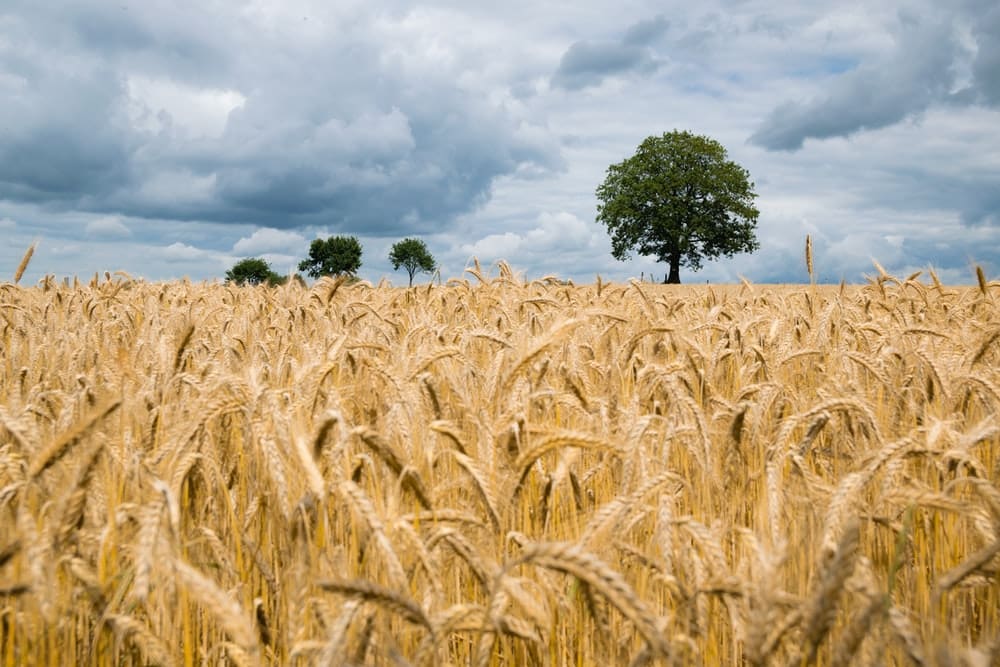AUSTRALIA’s total wheat crop is forecast to reach only 15.5 million tonnes (Mt) this year, after a tough spring brought low rainfall, frost and heat to key production regions, according to the NAB Rural Commodities Wrap released today.
The forecast represents a downgrade from the bank’s 20Mt forecast last month, and comes as a very challenging winter cropping season draws to a close.
NAB Agribusiness economist, Phin Ziebell, said overall the NAB Rural Commodities Index had fallen 2.9pc in September, and the bank had revised down wheat production forecasts in key states.
“In Western Australia the late break was followed by good June rain, but spring was unkind and we predict a WA wheat crop in the order of 6.3Mt,” Mr Ziebell said.
“Victoria and South Australia should yield 3.5Mt each, and crops are being cut for hay in New South Wales, where ongoing drought conditions have put our forecast at 1.75Mt.”
The report highlights that water availability will remain a key risk coming into summer, in both dryland and irrigated areas.
“Irrigation allocations in the Murray-Darling Basin are generally very low, and this is reflected in temporary water prices of around $700-800/megalitre. We expect permanent plantings, including almonds, citrus, and table grapes, will likely have a structural impact on water prices,” Mr Ziebell said.
“Limited irrigation also means Australia will likely see another season of low cotton production, and prices are well below peak in Australian dollar terms, with Cotlook A averaging around $524/bale last month.”
Farm input prices were moderately higher, reflecting a weak Australian dollar. Domestic feed prices remain higher than international benchmarks, but are 15.6pc lower than this time last year.
“With a good deal of winter crop being cut for hay, domestic hay supply should be strong coming into summer. While the NAB weighted feed grain index remains at $310/t this month, few graziers would have access to anything near those prices delivered on farm,” Mr Ziebell said.
In terms of seasonal outlook, the Bureau of Meteorology three-month outlook to January is below average in most areas, but closer to average in much of New South Wales.
“Northern and central western New South Wales continues to record root zone soil moisture levels in the lowest one percent on record, so any improvement in seasonal outlook is very welcome,” Mr Ziebell said.
The report shows resilience in livestock markets, with the National Trade Lamb Indicator (NTLI) sitting around $8/kilogram and the Eastern Young Cattle Indicator (EYCI) remaining flat.
“The EYCI is tracking sideways, at just below $5/kg. Demand for quality finished stock continues to run hot, but we struggle to see much upside for cattle prices until climatic conditions improve,” Mr Ziebell said.
“The NTLI figure is exceptional for this time of year, and it’s looking increasingly unlikely the lamb market will experience the traditional ‘spring flush’. Containment feeding of lambs remains popular, but high input costs means the viability of this approach remains sensitive to lamb prices.
“Looking at the wool market, the Eastern Market Indicator finished last week at $15.43/kg. While the United States and China have reached a limited agreement on trade, the wool market is likely to face ongoing uncertainty.”
Global Dairy Trade auction results have improved recently, with the lower AUD boosting farmgate offer prices.
Fruit and vegetables were mixed in September, with fruit falling 9.1pc and vegetables rising 3.1pc.
Source: NAB




HAVE YOUR SAY